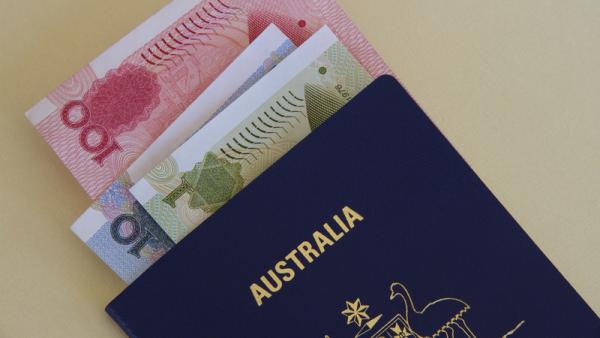The myth of Chinese money in Australia
Michael Leslie / Shutterstock

James Laurenceson, Director, Australia-China Relations Institute, University of Technology Sydney |
This article appeared in Pearls and Irritations, a public affairs blog, on June 30 2020.
Fears amongst the Australian public of China buying up the country run deep. Opportunistic politicians and commentators have long shown a willingness to tap into this unease to boost their own following.
With the Australia-China relationship now at a low ebb, this tactic – almost completely divorced from facts – is particularly destructive and needs to be called out.
According to the 2019 Lowy Poll, 68 percent of Australians said that the Australian government is ‘allowing too much investment from China’. This was up from 50 percent when the question was first asked in 2009.
National Party Member for Dawson in Queensland, George Christensen, is just one of the more recent examples of a public figure feeding this alarm.
In April, Christensen authorised the setting up of a website titled ‘China Inquiry’. He uses it to declare: ‘It’s time to speak up on China’s economic infiltration of our nation’.
Readers are told: ‘Communist China is Australia’s largest foreign investor. They use their investments in Australia to guarantee a supply to China, also off-shoring both profits and tax. Government-owned businesses also do the bidding of the Chinese Communist Party in Australia’.
He adds that ‘There is no single set of data that systematically details Communist China’s investment in Australia. The actual investment amount is completely unknown’.
If the amount really is ‘completely unknown’, on what basis then does Christensen confidently assert that China is Australia’s largest foreign investor?
The reality is however that there are not one but several reputable data sources available. And none point to China being the leading foreign holder of Australian assets.
The Australian Bureau of Statistics (ABS) finds that in 2019 China accounted for just two percent of the total foreign investment stock in Australia.
The US was the standout number one with 26 percent. China lagged in ninth place, behind Belgium, Singapore, Netherlands, Luxembourg and others. Even if Hong Kong SAR is included in the Chinese total, the aggregate would still only be in fifth.
If Christensen doesn’t believe the ABS, perhaps he’ll defer to the US embassy in Canberra, as well as nearly every visiting senior American political leader. These sources routinely tout the ABS numbers as the definitive evidence that Washington, not Beijing, is ‘Australia’s most important economic partner’.
In 2018 the ABS published the findings of a survey of majority foreign-owned companies in Australia. Covering the period 2014-2015, the ABS identified 2,039 majority US-owned firms. In comparison, there were just 204 majority China-owned firms, placing China at 10th on the list of Australia’s most prevalent foreign owners.
And rather than a surge of Chinese investment in Australia in recent years, an annual accounting by KPMG and Sydney University reported that the value recorded in 2019 was the lowest annual total since 2007.
According to the latest annual report of the Foreign Investment Review Board (FIRB), in 2018-19 approved investment from the US reached $58.2 billion. China was in fifth place with $13.1 billion. These FIRB data also likely understate the amount of American investment because a privately-owned US company can purchase Australian agricultural land or an agribusiness with a value of up to $1.2 billion without needing Canberra’s approval. This is 80 times greater than the threshold for needing approval that applies to equivalent Chinese investors for agricultural land and 20 times greater for agribusinesses.
Homing in specifically on Australia agricultural land, data collected by the Australian Tax Office (ATO) yield a headline that in 2018-19, China and the UK were the two largest foreign holders, each with a 2.4 percent share of the total.
But drill down one level deeper and it’s revealed that 91 percent of the agricultural land held by Chinese interests is actually leasehold. In other words, the Chinese investor does not own the underlying land asset. For freehold land, China follows the Netherlands, the US and the UK.
FIRB boss, David Irvine, also observes that leasehold land is, on average, less productive than freehold land. This means that if China’s share of Australian agricultural land was expressed in terms of value rather than area, it would be significantly less than 2.4 percent. Analysis by Rabobank points to the value number likely being between 1-1.5 percent.
Further, the criteria used by the ATO to determine land as having Chinese interests is if the holder is a corporate entity with a Chinese equity share of 20 percent or more. By far the largest landholdings with Chinese interests are those held by Australian Outback Beef Ltd, totalling 7.92 million hectares, or 87 percent of the Chinese total. But, in fact, Outback Beef only features 33 percent Chinese equity. A majority 67 percent share is held by Gina Rinehart’s Hancock Prospecting.
An Australian Prime Minister hasn’t visited China since September 2016, confirming long-standing tensions at an official level. These have worsened further in 2020.
And last week’s 2020 Lowy Poll shows that attitudes towards China have also soured amongst the Australian public: just 23 percent trusted China to ‘act responsibly in the world’, a nine point fall on an already low 32 percent in 2019.
China cannot escape significant responsibility for the deterioration. As recently retired senior Department of Foreign Affairs and Trade official, Richard Maude noted in a well-received essay last month, ‘No Australian government can ignore the immense clash of interests and values that today’s China creates and the limits this inevitably puts on the relationship’.
But to the extent that Australian perceptions have deteriorated and mutually beneficial engagement has suffered because the facts of the bilateral relationship have been distorted or wilfully ignored, such as those around Chinese investment, often-times the blame lies at home.
Author
Professor James Laurenceson is Director of the Australia-China Relations Institute at the University of Technology Sydney.

